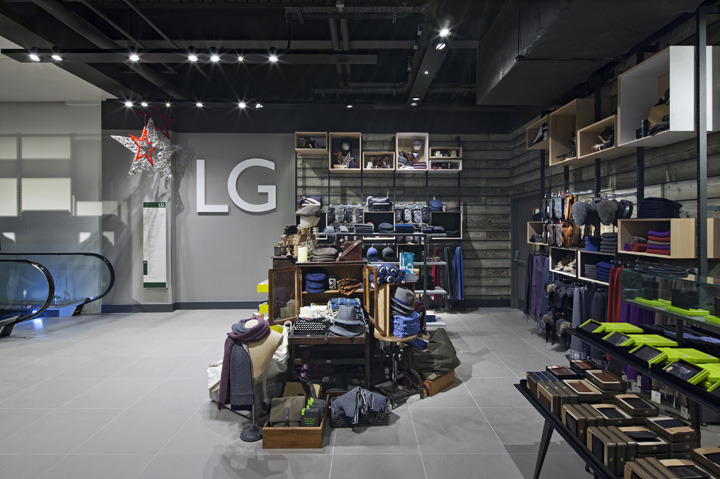


The new ‘boutique department store’ in Exeter is the result of some bold and innovative thinking that has created a new model for John Lewis. The familiar 150k square foot city centre destination is adjusted here; the space is only 65k square feet, but the full offer is presented… in effect, the whole range in half the space.

The single-storey building previously occupied by Debenhams has been expanded beyond recognition. This new five-storey store occupies a key location, looking down the high street and across the Devon countryside, it is a landmark for the city.

Showcasing stock to be purchased in other ways is key. We have created a showroom aesthetic, rather than an open stockroom where bulky products fill the floor. Some products are a natural fit for this approach – homewares in particular can be presented with style and confidence in a showroom setting – whereas fashion and beauty tend to need instant fulfilment. John Lewis understands this and has managed the merchandising accordingly. The refurbished building has offered some unique opportunities: small, previously unmanageable spaces in alcoves and recesses have become locations for key ranges, brands or services.

The departments are carefully planned to take into account their adjacencies and encourage browsing and cross-selling. Each floor has a square raft of solid ceiling, surrounded by an open ceiling around the perimeter that pushes out into the corners. Walking around that square central zone without the aid of a walkway creates an intuitive circulation that has become a brand signature.

Fragrance, footwear, handbags, candles, carpets, even beds have their own space within the space, their own shop within a shop, emphasising that ‘boutique’ aspiration. Importantly, 80% of the fixtures in the space are standard, 20% bespoke, so flexibility and modularity is maintained and expression is overlaid. Functionality is key but personality is crucial.

The smaller footprint offering the full range demands a contribution from online sales in-store to achieve financial targets. 30 digital sales terminals are strategically placed throughout the store, to encourage customers to shop in different ways, with or without the help of the specialist staff. This interactive element serves three functions: to attract, inform and transact. The ultimate function of these screens is to make a sale, but the experience along the way can lead to additional sales, highlighting product the customer didn’t know they wanted or didn’t even know was available.

Additional digital features in the customer journey include an interactive store guide on arrival, that takes the customer to any department from the entrance lobby, and a series of promotional screens that push key brands in key locations.

A great store in a city that has waited a long time for their favourite brand will inevitably thrive, but few people would have predicted that John Lewis, a brand once noted for their caution and control, could achieve such an engaging and attractive proposition. This is retail at its best, comparable with any store of its type in the world. The client team and critics have described it as ‘possibly the best store that John Lewis has ever opened’. Praise indeed and no exaggeration.
Designed by Dalziel and Pow







Add to collection










